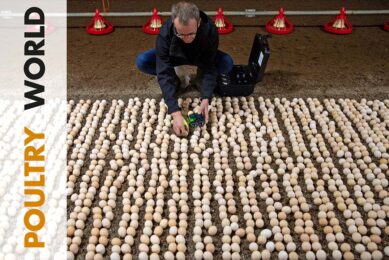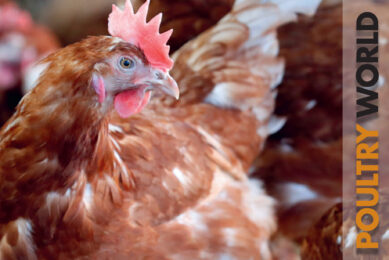Production forecasts and market dynamics in Poultry World

This edition of Poultry World explores challenges and opportunities in the poultry industry globally in an interview with Ricardo Santin with the International Poultry Council. We visit a Belgian farm which a boasts a compound feed plant, a large hatchery and broiler production all in 1 operation, and put a magnifying glass on tiny creatures that can cause big problems: red mites. This and more in the latest edition of Poultry World.
Ricardo Santin, Int’l Poultry Council: “There should be no borders for food”
Newly-appointed International Poultry Council chair, Ricardo Santin, recently presented his take on the poultry industry all over the globe – both its challenges and opportunities. He forecasts growth in animal protein production of 1 million tonnes per year and condemns protectionism under the slogan “no borders for food”. Poultry World interviewed him about production forecasts and market dynamics.
From egg to chicken leg in one family business
Belgian broiler integration Lisabeth is a family business that controls its entire poultry meat supply chain, including a compound feed plant, the large hatchery and broiler production, all in 1 operation.

Coming soon: Rapid, highly accurate on-farm HPAI testing
Highly-pathogenic avian influenza has caused enormous damage worldwide. Experts are working hard on a solution – vaccines are being developed and rapid on-farm testing is about to become available.
5 questions on leveraging knowledge and technology to improve performance
Cargill has historically been known as a feed commodity trading house, but today, the company is involved in the whole chain, from farm to fork. Poultry World spoke to Christos Antipatis, global strategic marketing and technology director, micronutrition and health solutions at Cargill Animal Nutrition, to understand the dynamics behind it all.
Lower footprint with European soy
Van den Ham Animal Nutrition Research has tested many feed compounds in the past. The company recently explored the effects of soy substitutes. Can laying hens do without this high-quality protein source? A trial with European soy instead of South American soy will begin soon.

Mexico chicken imports are forecast to increase by 5%
Driven by robust domestic demand and the price competitiveness of chicken meat, Mexican chicken imports are forecast to increase by 5% in 2024. Reports also show that nearly half of Mexico’s feed production is destined for the poultry industry.
Eliminating the major egg allergen ovomucoid in chickens
Researchers have used genome editing technology to produce eggs without the ovomucoid protein that causes egg white allergies. They found that the eggs from genetically altered hens did not have ovomucoid or mutations of ovomucoid.
Getting to grips with red mites
Red mites – they are little but can turn into a big problem! “This is especially true in organic farming,” knows Dutch organic layer farmer, Jacco Korenblik. When he was invited to take part in a trial for a novel red mite product, he was the first to sign up.

Organic acids improve hatchability and chick quality
A recently published study shows how organic acids improve broiler breeders’ hatchability and chick quality by reducing embryonic mortality and total bacterial counts before hatch, while giving birds a better starting weight and immune response post hatch.
Core elements of antibiotic stewardship explained
Advances in science-based antibiotic stewardship principles create an ecosystem in which poultry health improves, the need for antibiotic use decreases and poultry production can flourish. Many countries have established policies to reduce antibiotic use in the poultry industry and have introduced alternative strategies to improve poultry health and welfare.
Column: Behaviour and layout are key
At the IPPE exhibition in the US, columnist Rick van Emous engaged in discussions with numerous individuals from various countries from the broiler breeder industry. One recurring topic that garnered significant attention was the notable decline in the average hatchability of breeder eggs in the US.
 Beheer
Beheer









 WP Admin
WP Admin  Bewerk bericht
Bewerk bericht